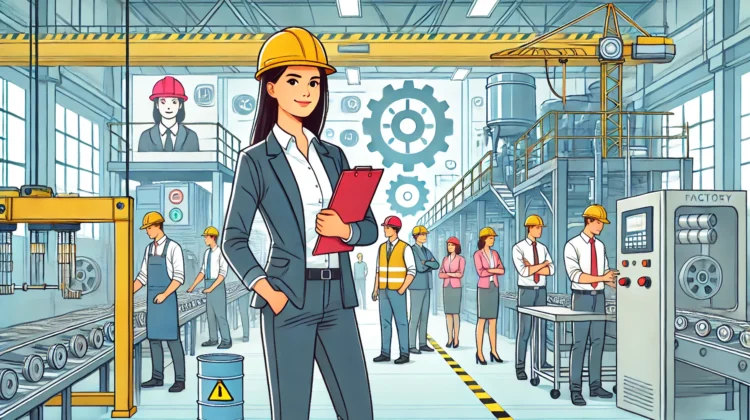
The hum of the machines has been the soundtrack of my life for as long as I can remember. As a kid, I’d tag along with my dad to the factory on weekends, watching him work the massive presses and listening to the clang of steel. Back then, I never imagined I’d end up here, not as another face on the line but as the first female foreman this factory has ever had.
The title felt heavy when they handed it to me, and not because I wasn’t proud. I’d worked for it—worked harder than anyone else, if I’m being honest. But when Mr. Hampton made the announcement in the breakroom, I could feel the room freeze. No cheers, no congratulations. Just a few polite nods and a lot of side-eye.
“She only got it because they needed to check a box,” I overheard someone say later. “What’s she gonna do? Redecorate the place?”
I pretended not to hear, but those words stuck. Not because they hurt, but because they fueled me. I’ve always had a stubborn streak, and if there’s one thing I’ve learned, it’s that the best way to prove people wrong is to do the job so well, they can’t ignore you.
My first day as foreman, I walked the floor with my clipboard, taking it all in. The place hadn’t changed much since I was a kid—same machines, same faces, same inefficiencies. I’d seen it for years: machines out of sync, workers doubling back on tasks, and safety protocols that were more like suggestions.
By the end of the week, I had a plan. A big one. I stayed up late in my little apartment sketching out diagrams and reorganizing workflows, pouring over ways to make things better. When I presented it to Mr. Hampton, he raised an eyebrow.
“This is ambitious,” he said, flipping through my notes. “You really think you can get the crew on board with this?”
“I don’t need them to like it,” I said, my voice steady. “I just need it to work.”
He gave me the green light, but I knew it wasn’t because he believed in me. It was a test. And if I failed, I’d be another footnote in the factory’s history—proof that women didn’t belong in leadership.
Implementing my ideas wasn’t easy. To be honest, it felt like dragging a boulder uphill most days. Sam, one of the older machinists, was the loudest critic.
“Been doing this job longer than you’ve been alive,” he said one morning, crossing his arms as I tried to explain a change to his station. “I don’t need some girl telling me how to run my machine.”
I bit back my frustration. “I’m not trying to change what you do, Sam. I’m trying to make it easier. If we tweak your setup, you’ll save twenty percent on cycle time, and you won’t have to climb up and down the platform so much.”
He grumbled, but he let me make the adjustment. And when the numbers came back better than I’d promised, he didn’t say much—just a quiet, “Not bad, Claire.” That was enough for me.
Over time, others started to come around. They saw the results: fewer accidents, higher productivity, and even a little more breathing room in the schedule. I didn’t just bark orders. I listened, encouraged their input, and made them feel like we were in it together. Slowly but surely, the ice thawed.
The best part of the job wasn’t just fixing the production line, though. It was seeing the potential in others, especially the women in our town who’d always thought this kind of work wasn’t for them. I started a mentorship program at the local technical college, holding workshops and bringing in speakers. I wanted young women to know they didn’t have to sit on the sidelines. They could weld, they could design, they could lead.
At first, we had just a handful of participants, but word spread. Soon, we had women training in all kinds of industrial roles. Some of them even started working at the factory. Watching them step onto the floor for the first time, I saw a little bit of myself in their wide eyes and determined smiles.
It’s been a few years now, and I’m not just a foreman anymore—I’m the plant manager. The mentorship program has expanded, and our factory has become a model for others around the state. Some of the same men who doubted me at first are the ones who shake my hand the hardest when they see me now.
When I walk the floor these days, I see so many faces—men and women, young and old—all working together. And it’s not just about the machines humming or the steel being shaped. It’s about the barriers we’ve broken and the paths we’ve paved.
As I watch a young woman adjust a press with confidence, I smile to myself. This isn’t just my story anymore. It’s theirs, too. And I wouldn’t trade it for anything.